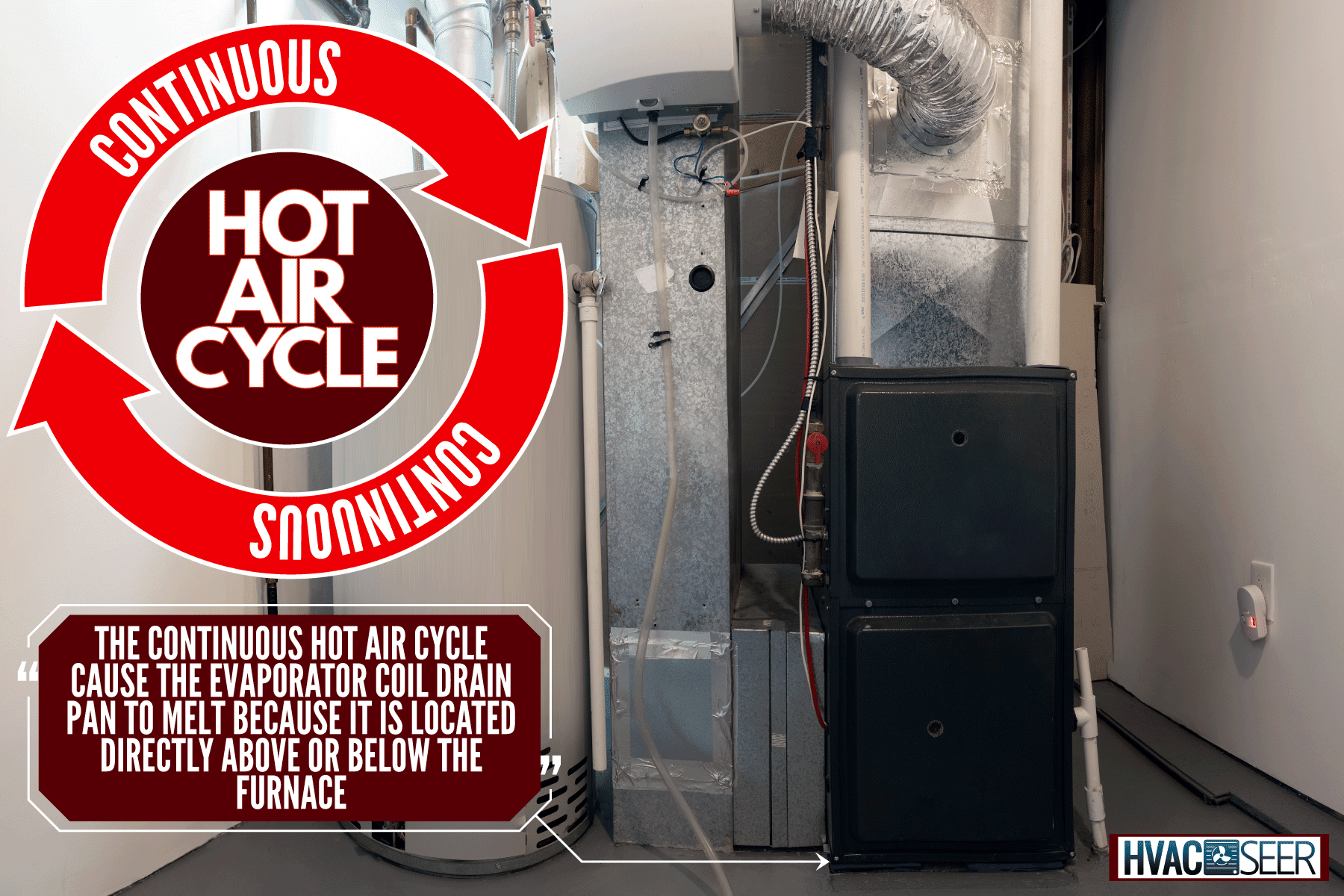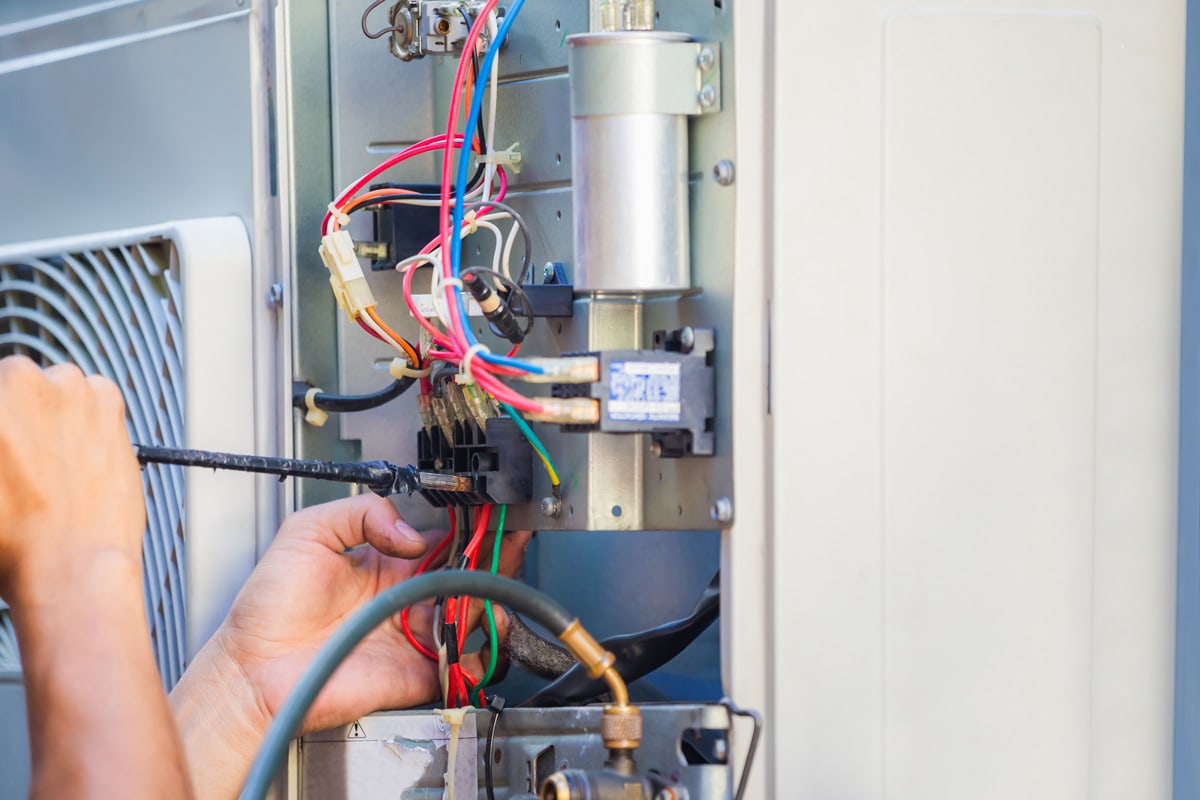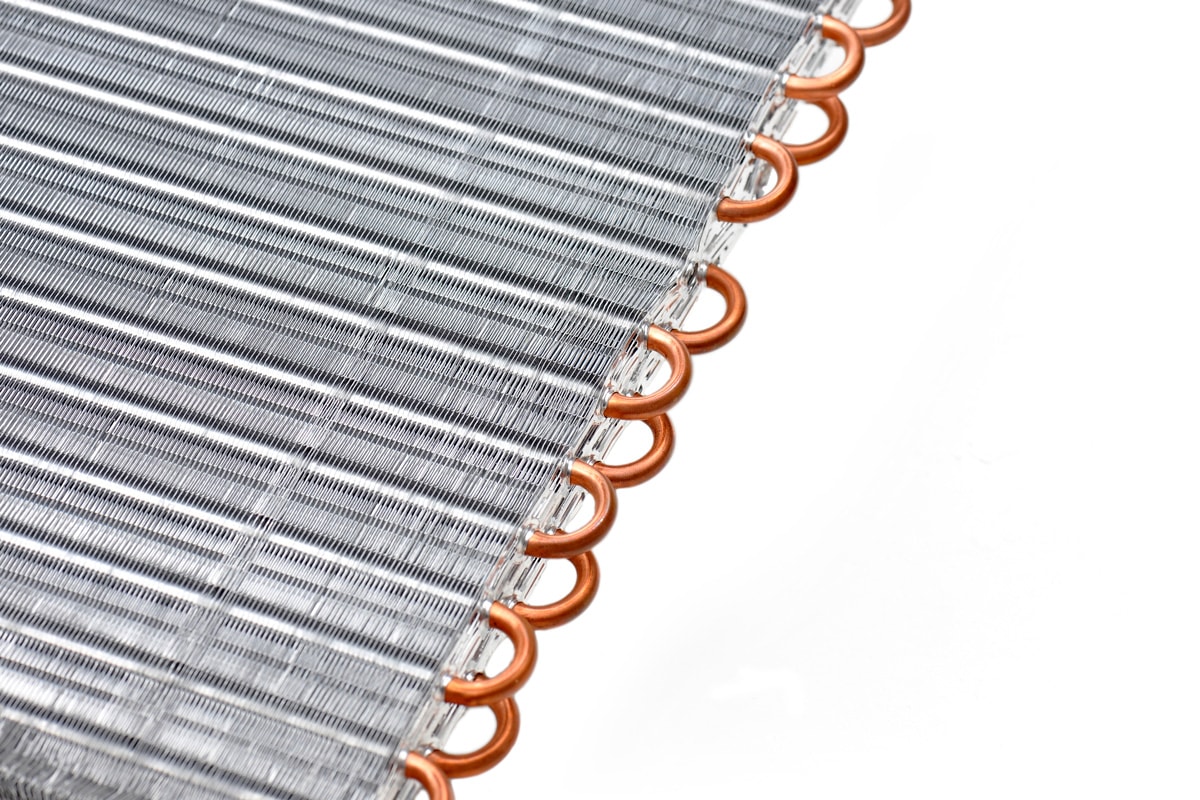Is there water accumulating beneath your HVAC system? It is an indication that something is wrong with it. After inspecting your unit, you discovered that your evaporator coil drain pan has melted and are unsure why or what to do about it. We gathered information from various sources and devised a solution for you.
The continuous hot air cycle cause the evaporator coil drain pan to melt because it is located directly above or below the furnace. The drain pan of today's air conditioners is made of plastic, which melts when exposed to high temperatures.
Keeping an eye on your coil drain pan can save you a lot of trouble in the future. Also, it's best to call a trained professional for help if you are unsure about what's happening. Please read below for more information about your evaporator coil drain pan.

Drain Pan Melting
The primary function of the evaporator coil drain pan is to collect the water produced during the air conditioning cycle. Drain pans are sometimes made of metal, but they corrode easily, causing water to leak. As a result, more recent models have plastic drain pans.
Plastic drain pans have a lifespan of five to 10 years. They can become overheated, deformed, and melt when exposed to extremely high temperatures. One of the reasons most drain pans melt is their location in the system.

Their location determines whether your air conditioner is installed vertically or horizontally. You can find the evaporator coil beside the furnace in a horizontal AC installation, and the drain pan is beneath it. It usually has a backup drain pan to ensure that no water leaks.
The evaporator coil is located above the furnace, and the drain pan is directly beneath it in a vertical AC installation. The drain pan, especially when old, is more likely to melt in this installation because it is more exposed to high temperatures.
Effect Of Drain Pan Melting
A drain pan that melts can threaten a household's health and safety.
Smoke And Fire Hazards From Melting
Evaporator coil drain pans may melt when exposed to high temperatures. It may result in smoke and fire damage if not addressed immediately. In addition, inhaling plastic fumes may cause or worsen health problems such as asthma, skin irritations, and headaches.
Health And Safety Hazards From Water Leakage
The drain pan collects condensation from the air conditioning cycle. Water leakage is highly likely if the drain pan is deformed, damaged, or melted.
Leakage can endanger the health and safety of your system and your family. A number of potential problems can be caused by a melted drain pan.
Molds and spores are one source of concern. They thrive in moist environments, so they may grow in the area where the water leak occurs if it is not detected and treated promptly.
Water damage to your home may also result from leaks. Even minor leaks, if not addressed immediately, can rot the wood structural elements of your home.

Drain Pan Replacement
You may need to replace the drain pan if it has completely melted. Most HVAC service providers describe the procedure for replacing them. They suggest that before you do, you must first inspect how your air conditioner is installed.
Vertical Installation
Vertically installed air conditioners have only one drain pan.
- Turn off the power before replacing the pan yourself.
- Check to see if the drain pan is secured with screws or clips.
- If so, you can replace them by removing the screws and clips.
- Remove the damaged or melted drain pan.
- Place the replacement drain pan.
- Fix it with a screw or a clip.
Drain pans in some models are welded or fixed. In these cases, you will need to contact your local HVAC service provider to perform the necessary repairs and replacements.
Horizontal Installation
There are two drain pans in horizontally installed systems. The primary drain pan is fixed and connected to the system, and the secondary drain pan is located at the system's bottom to ensure no water leaks.
Primary Condensate Drain Pan
The primary drain pan replacement procedure is similar to the drain pan in vertically installed air conditioners. Check if it's attached to the system with screws or clips. If so, loosen the screws or clips and replace them with a new drain pan.
It is not recommended to replace the drain pan yourself if it is welded in place. Doing so may cause further damage to your system, so call an HVAC professional is advised.
Secondary Condensate Pan
The secondary condensate pan, on the other hand, is easily replaceable.
- To ensure your safety, turn off the power.
- Once the access panel has been removed, loosen the pan by removing the screws or clips.
- Then, to avoid damage, loosen the drain lines.
- Remove the melted or damaged drain pan.
- Insert a new drain pan and secure it with screws or clips.
Diversitech AC Secondary Plastic Condensate Drain Pan is a durable option to replace your damaged pan.
Click here to view this product on Amazon.
Cost Of Drain Pan Replacement
The cost of replacing your drain pan ranges from $275 to $800, including parts and labor. A service call and troubleshooting costs range from $75 to $200. The replacement would cost between $200 and $600.
Evaporator Coil Drain Pan Recall
Certain air conditioner companies are recalling released drain pans as the Consumer Product Safety Commission advised. This includes units released by Daikin Comfort Technology Manufacturing that were sold between January 2019 and November 2021.
These are being recalled because of the fire hazard it brings and reports of fire starts that resulted in injuries. The CPSC published the full recall report.
You can have your drain pan repaired or replaced by a qualified technician for free if your unit is included in this recall. You can verify if your unit is included using their verification tool.
Why Are Evaporator Coil Drain Pans Important?

An air conditioner's evaporator coil drain pan is a safety feature. Because condensation is produced by the cooling cycle and does not evaporate quickly, it must be drained.
An air conditioner generates five to 20 gallons of condensate per day, which must be drained via a drain line or pipe. This feature ensures that water will safely pass through the line or pipe and drain outside while preventing overflow.
When it overflows, water enters the system, causing severe problems with the unit.
How Can You Prevent AC Drain Pan Issues?

The drain pan collects water from the air conditioning cycle and drains it safely through the drain line. Water would seep through the system and cause severe damage to your air conditioner if the pan was missing or damaged.
Corrosion of metal drain pans and cracking or melting plastic drain pans are examples of drain pan damage. It may also experience water overflow issues.
It would be best if your AC were checked by your HVAC technician once a year to detect problems early on or to prevent them entirely. Simple repairs can also be completed without the assistance of a professional.
To avoid clogging, replace or clean your air filters regularly, and install a float valve to monitor the water levels in your drain pan.
The EZ-FLO Float valve can monitor the water level in your drain pipe.
Click here to view this product on Amazon.
How Long Do Drain Pans Last?
People used metal drain pans in early AC models, which caused a slew of issues. Because drain pans collect water, they rust and corrode over time. As a result, the pan developed holes and cracks.
This problem was solved when manufacturers created crack-resistant and long-lasting plastic drain pans. Many HVAC service providers have tested these plastic drain pans to last five to 10 years.
Even though drain pans are highly durable, to avoid severe damage to the drain and the unit, it is still best to have them checked regularly.
In Closing

Plastic evaporator coil drain pans have a lifespan of five to 10 years. However, they can still melt and get damaged if exposed to high temperatures for an extended period, posing a danger to the safety of homeowners.
Depending on the severity of the situation, you may want to investigate the issue further on your own or seek assistance from a professional HVAC technician.
To learn more about evaporator coils, check out the linked articles.


